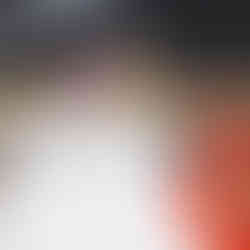Project 1: Shoes of the Future
- Summer Thompson

- Oct 27, 2018
- 3 min read

My first official project for the 2018 Object class, a pair of light-up roller blades with sensors and responsive LEDs. My inspiration came from listening to a 99pi Podcast on the history of Roller blades, which when they were first invented were called "Shoes of the Future". I was also inspired to continue my previous themes of building on top of prefabricated objects. Early on I decided the best way to approach this project was to design two separate sensor and output circuits in order to keep this project inexpensive and simple. Bellow are photos of the skates before I started working on them.
Materials:
Rainbow ribbon wire
9v Battery leads
9v Batteries

Design
I started this project with this pair of roller skates and decided where I thought the LEDs would sit best. My final design was similar to the drawing, except I decided to do three strips, one on either side of the undercarriage and one facing down to illuminate the cement under the skate.

The initial step of this project was to test the accelerometer in order to better understand the output data for when the accelerometers before they were attached to the micro-controllers. I chose to use Sparkfun's triple axis breakout board because it output three analog values based on three axis, x, y, and z. I used this code to determine minimum and maximum values for readings from the x, y, and z inputs. When testing this code, I tested values when the accelerometer was flat on a table and at 90 degrees to all of its axis. I also recorded values read in by the sensors while shaking the accelerometer back and forth on these axis. I used these to calculate possible ranges and predict ranges that would indicate turning.
The second step of this project was to setup and test the LED strips. I used WS2812 LEDs that worked with the Adafruit NeoPixel library. I used this library to test my strips and based my interaction animation on the example code they provided through Arduino IDE. At this stage in the project, I ran out of the skinny LEDs and accidentally ordered a different style from Sparkfun. This turned out to be a blessing in disguise because the wider, side-facing LEDs were so much easier to solder to.
Play Testing
The first assignment in this project was to create a play-test prototype that easily demonstrated interactions. I created my prototype using Erector toy parts from my Boss's kids toy box. I built the wheels and chasey then mounted my Arduino and breadboard to the mock-up skate using hot glue. I added cardboard on either side of the Arduino/bread board for attaching my LED strips.

I noticed that during the play-test, right turns were being triggered more often then left turns, even when the skate was sitting still on the table. Here is the code I used during the play test.
Project Fabrication

Mostly misery, soldering with an ancient soldering iron for lead to a tiny tiny Skinny LED strip. Thank you Sparkfun for stocking the side facing skinny strip because they are superior.

Most of the fabrication was cutting strips of LEDs and soldering them end to end using ribbon cable. I did this while measuring and wrapping wires around the skate to determine the right lengths. Once the LED strips were soldered together, I connected the input end to a digital pin on the micro controller. I also added battery leads to connect the 9 volt battery and the accelerometer. See Schematic bellow.

Once the first skate was done, I repeated the process for the second shoe. I had to code each shoe differently as the LED strips were different lengths. Here are is the code for the left shoe and the right shoe.

After getting everything connected, I hot glued all the parts to the skate to ensure they could be used without destroying the lights.
Final result
Although I haven't taken these roller blades out on the rink just yet, I am satisfied with my progress thus far on the project. I learned a lot of valuable fabrication lessons during this project, like to always order extra parts ahead of time, use a good soldering iron, and never order the skinny LEDs. The interactive feature of this project works but could be refined further. I had a good amount of struggle getting my code to work well on the shoe. I wish I knew more about Arduino interrupt functions as I think they could make my skates faster to respond on interactions. Thanks for reading!












Comments